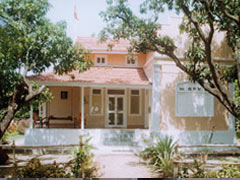Shanti Mandir was established in 1987 by Mahamandaleshwar Swami Nityananda. The organization continues the spiritual work of his Guru, the renowned sage Baba Muktananda, whom he succeeded in 1982.

Shanti Mandir focuses on:
- Providing access to the teachings and practices of the great sages of India, in particular those of the lineage represented by Swami Nityananda; Baba Muktananda; and his Guru, Bhagavan Nityananda
- Guiding seekers to the direct experience of divinity through Sanskrit chanting, silent meditation, study of sacred texts, the offering of service, and participation in sacred rituals
- Continuing the Vedic tradition through teaching the Vedic way of life and the philosophy of Vedanta, performing the ancient sacred rituals of the tradition, and receiving other saints of the tradition
- Shri Muktananda Sanskrit Mahavidyalaya – a free Sanskrit school that provides a rounded and authentic exposure to Vedic teachings
- Shanti Hastkala – a woman-empowerment program that helps the rural poor learn handicraft skills and provides them with work opportunities
- Shanti Arogya Mandir – a mobile clinic that services the medical needs of the villages around the ashram in Magod free of charge
- Helping the impoverished in rural India with eye camps to restore sight to those blinded by cataracts, with the provision of a free medical procedure to implant intraocular lenses
Two of the three ashrams of Shanti Mandir (in Magod, India and in Walden, USA) are located in beautiful and serene natural settings. The third ashram (in Kankhal, India, on the river Ganges) is on a street full of old ashrams and ancient temples, at the heart of the pilgrimage center of Haridwar, at the foothills of the Himalayas.
Each ashram provides an ideal environment for seekers to immerse themselves in a traditional way of spiritual life, as passed down from the ancient sages.





